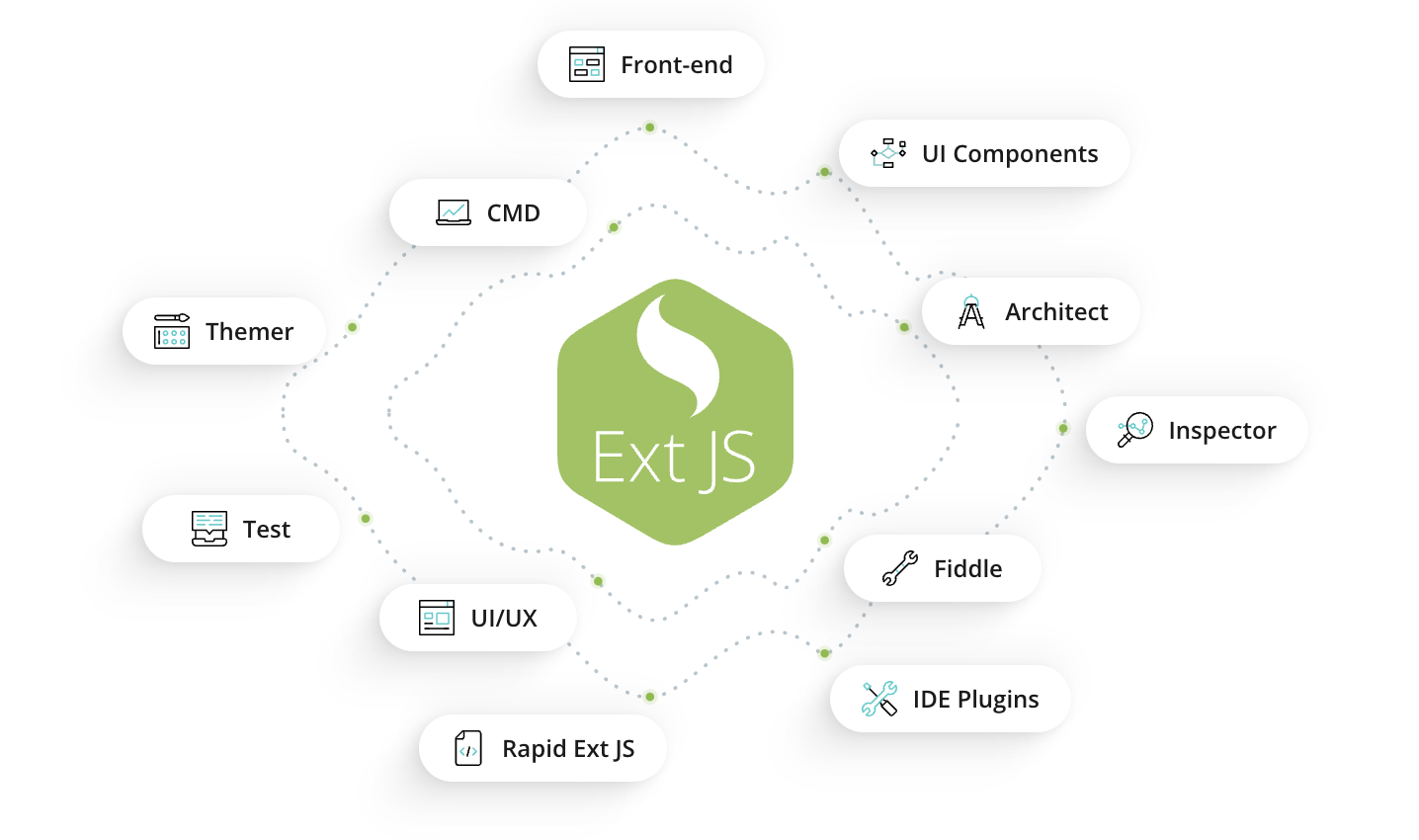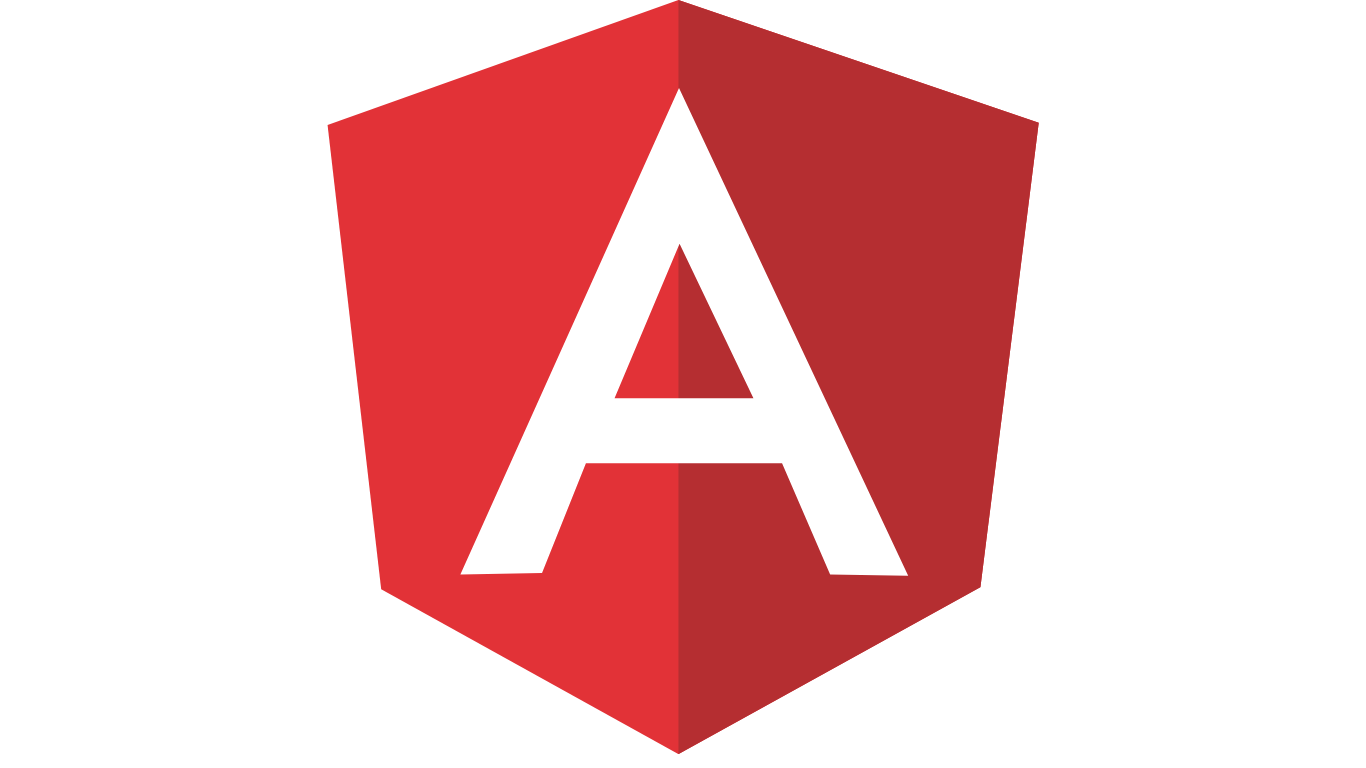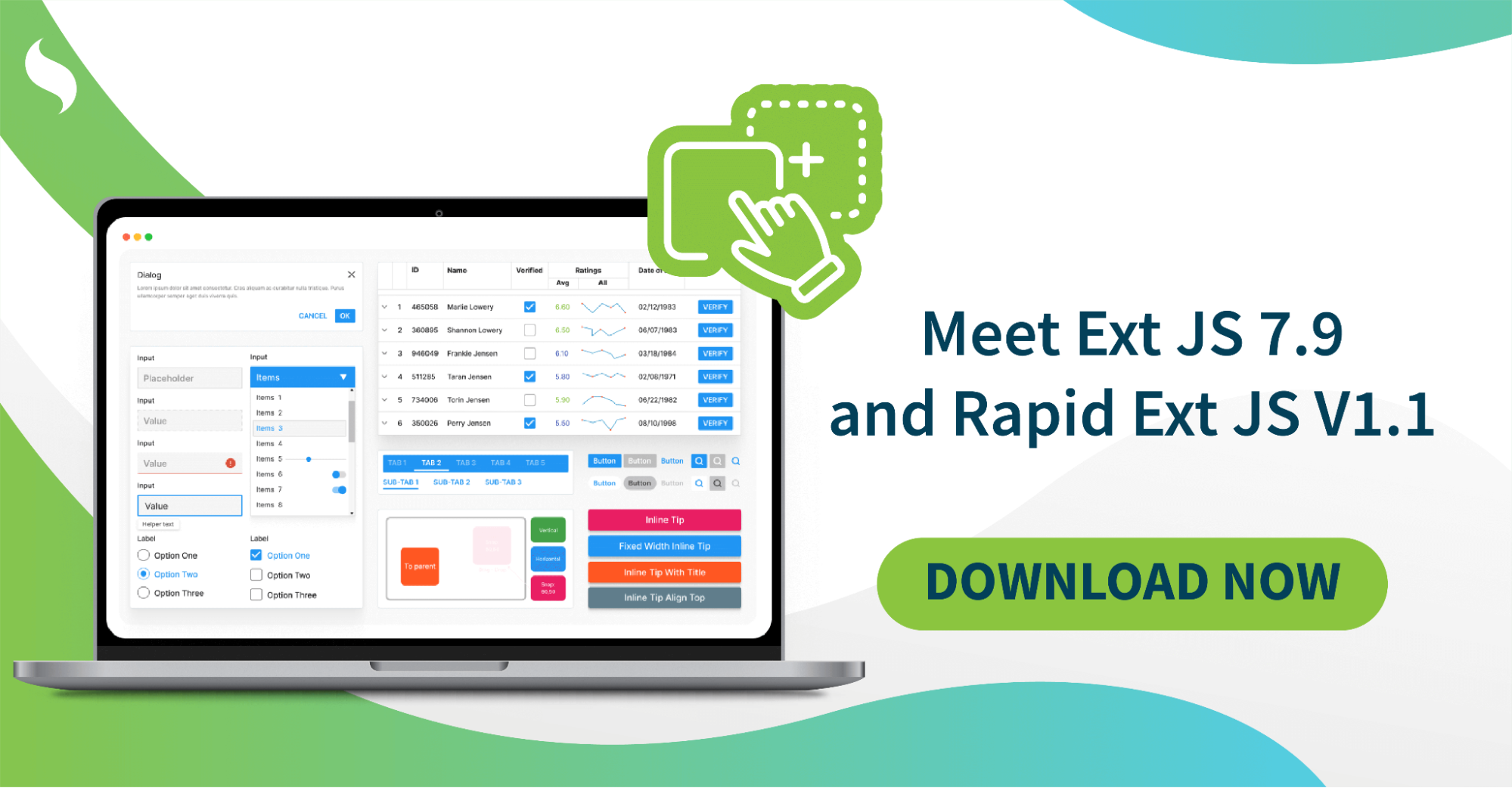The Evolution of Frameworks: Choosing the Right Tool for Web App Success in 2024
In the early days of web development, developers used to build websites and web applications from scratch without any standardized tools and methodologies. However, as the complexity of web applications increased, developers needed ways to write more understandable, maintainable, and scalable code and improve development speed. This led to the creation and emergence of web frameworks and JS frameworks. Web frameworks essentially provide pre-defined code functions, components, libraries, and tools for common web app development tasks, facilitating rapid development. They offer a more structured approach to building and maintaining web apps and play a crucial role in simplifying and streamlining web development.
Today, thousands of developers and organizations use web frameworks to build high-performance, scalable, and maintainable web apps faster. However, choosing the right framework for your project is essential to reap the benefits of a web or JavaScript framework.
In this article, we’ll discuss the evolution of web frameworks and JS frameworks and explore the factors you should consider when choosing the right framework for your web app.
Historical Perspective
Back then, developers encountered lots of challenges while building web apps. Firstly, there weren’t any established standardized practices for naming conventions, project structure, etc. This made it difficult for early developers to write readable, understandable, and maintainable code. Additionally, creating dynamic and highly interactive web apps without any framework was pretty complex and time-consuming.
Ensuring cross-browser compatibility was another prevalent challenge for early developers, as different browsers have different standards and rendering engines. Moreover, as web apps became more complex, ensuring scalability had its own challenges.
These challenges highlighted the need for a more structured approach and advanced tools for web development, which led to the emergence of web frameworks and JS frameworks. Web frameworks include both server-side and client-side frameworks.
Evolution of Web Frameworks and JS Frameworks
Web frameworks are designed to make the web development process simpler, faster, and more efficient. These frameworks are continuously evolving to address the challenges faced by web developers. Today, a wide range of back-end and front-end frameworks are available for different purposes.
Server-Side Frameworks
Server-side frameworks make tasks like handling HTTP requests, URL mapping, interacting with databases, etc., simpler and easier. Some of the earliest notable server-side frameworks include Ruby on Rails (RoR) and Django.
Ruby on Rails uses the Ruby programming language and implements the convention over configuration (CoC) and Don’t Repeat Yourself (DRY) principles, enhancing developer productivity and making web development simpler. It offers various built-in tools and libraries, such as tools for scaffolding, making it easier to handle common web development tasks.
Django is another popular web framework written in Python. It allows you to create web applications that run efficiently on various platforms, such as Windows, MacOS, and Linux. Prominent features of the framework include an efficient ORM for interacting with databases, implementation of the Don’t Repeat Yourself (DRY) principle, and a built-in admin interface.
These frameworks are continuously evolving and are still widely used for handling server-side tasks.
Front-End Frameworks

Front-end frameworks or JS frameworks provide pre-written JavaScript code libraries and functions for common tasks involved in front-end development. One of the earliest notable client-side frameworks is jQuery. The framework was designed to simplify various tasks related to DOM manipulation and event handling. It was widely recognized for its cross-browser compatibility and ease of use.
However, as the complexity of web apps increased, there was a need for more comprehensive frameworks. This led to the introduction of popular frameworks like Ext JS, Angular and React. Today, numerous JavaScript frameworks are available for different purposes.
Current State of JS Frameworks
Currently, Ext JS, Angular and React are the most popular JavaScript frameworks. These frameworks offer a wide range of advanced features to facilitate web development.
Ext JS

Ext JS is a comprehensive JS framework for building high-performance enterprise-scale applications. The framework enables developers to build highly interactive, beautiful, and functional UIs. It is trusted by thousands of developers and enterprises worldwide, including American Airlines, Apple, Canon, and Cisco, for its high level of security.
Key features of Ext JS include:
- Offers 140+ pre-built and high-performance UI components. These include buttons, icons, dropdown menus, carousels, grids, sliders, charts, tabs, and many more.
- All Ext JS UI components are highly customizable and designed to work across browsers and devices.
- Facilitates cross-platform development.
- Utilizes the MVVM architecture to help developers write more readable, maintainable, and scalable code
- Supports two-way data binding
- Supports a wide range of layouts, such as fit, hbox, border, vbox, card, etc. Each layout in Ext JS caters to different UI requirements, enabling developers to build attractive and complex user interfaces with ease.
- Ext JS layout system is designed to be responsive. It automatically adjusts its components and content according to the screen size.
- Ext JS has extensive documentation that contains all the details regarding the framework’s features, capabilities, and functionality. The documentation also provides various coding examples.
- Sencha has a dedicated Resource Center where you can find a diverse range of supporting videos, ebooks, webinars, and whitepapers related to the Ext JS framework.
- Highly secure
Angular

Released in 2010, Angular is a TypeScript-based framework built by Google. Prominent features of the framework include:
- Open-source
- Leverages a component-based architecture
- Two-way data binding
- Widely used for building high-performance single-page applications
- Enables developers to build reusable components
- Highly customizable
- Easy to extend
- Utilizes MVC (Model-View-Controller) architecture
- Easy to test
- Easy to learn
- Supported by Google
React

Released in 2013, React is a popular JavaScript library that enables developers to build interactive user interfaces. Prominent features of React include:
- Open-source JavaScript framework
- Utilizes a component-based architecture
- Offers a virtual DOM (Document Object Model) feature
- Facilitates the creation of reusable components
- Uni-directional data flow
- Various React Developer Tools are available to ease the app development process
- Easy to learn
- Large developer community
- Flux controls
Challenges and Considerations
Common challenges developers face while choosing a framework for their app include:
- Choosing the right framework for a specific project.
- Finding a framework that is easy to learn and integrate.
- Choosing a framework that integrates seamlessly with other libraries and tools.
- Striking the right balance between performance, scalability, and ease of development. Assessing performance characteristics, scalability capabilities, and features of various frameworks can help you choose the right one for your requirements.
- Choosing a secure framework that offers robust built-in security features to protect against different cyber threats.
Frameworks in 2024
Popular web frameworks are expected to evolve with technological advancements. With the increasing use of AI and machine learning in web apps, web frameworks may provide enhanced support for the integration of machine learning models. They may also facilitate the development of apps with edge computing capabilities.
Notable frameworks like Ext JS, React, Angular and Ruby on Rails will also continue to add new features. For instance, Angular introduced deferrable views and fine-grained reactivity with Signals in the past year. It is expected to focus on fine-grained reactivity further in 2024. It may also support optional Zone.js for existing projects. Similarly, React may introduce an auto-memoizing compiler in 2024. Moreover, the Ext JS team has also planned to enhance its widely used Grid component further with new features. Ext JS will also offer numerous quality enhancements for the Modern & Classic Toolkit focused on Chart, Timefield, TreePanel, ComboBox, Store, etc., open tooling, and much more.
Also Read: Recursion vs. Iteration: Choosing the Right Approach in Ext JS
How to Choose the Right Framework
Here are the key factors to consider when choosing a web framework or JavaScript framework:
Project Requirements
Before choosing a JavaScript framework, it’s essential to evaluate your project requirements, such as the web application size, scalability and performance requirements, and complexity. This way, you can choose the best framework for your specific project.
For example, if you’re developing an enterprise-level web or mobile application that involves complex UI and scalability requirements, a framework, such as Ext JS, that is specifically designed for building enterprise-level apps would be the best option. Similarly, if you’re developing a cross-platform single-page web app, Angular is a good choice.
Learning Curve
In today’s competitive software development world, developers want to create high-performance web apps as quickly as possible. And a web framework helps with that by providing pre-built code functions and libraries. However, not all frameworks are easy to learn. If you choose a framework with a steep learning curve, you’ll need to spend lots of time learning the ins and outs of the framework. Therefore, it’s essentiall to evaluate the learning curve associated with a framework before choosing the right framework.
It’s also crucial to assess whether the framework comes with detailed documentation and additional learning resources that you can utilize to learn about the features and implementation of the framework.
Developer Community
Another crucial factor to consider is how big is the developer community of the framework. Popular frameworks like Ext JS and React have massive developer communities where you can connect with other professional developers who can assist you with any issues you may encounter while using the framework.
Performance
The best JS frameworks are designed to work seamlessly in any app and handle data efficiently. For example, Ext JS offers a blazing-fast JS grid that can handle millions of records without compromising the app’s performance and speed.
Integration With Other Libraries
While a good JS framework offers all the necessary tools developers need to create responsive and interactive UI, you may also need additional libraries for tasks like DOM manipulation, data processing, rich text editing, etc. Thus, it’s essential to choose a framework that can integrate seamlessly with other libraries. Moreover, you should also assess if the framework has its own ecosystem of extensions that you can use to extend the functionality of the framework.
Long-Term Viability
Choosing a framework that evolves continuously, adds new features, and releases improved versions frequently is essential to ensure your app continues to function efficiently.
Conclusion
Web frameworks provide a structured approach to creating and maintaining web apps. They essentially come with pre-defined code functions, components, libraries, and tools for common web app development tasks. Hence, they simplify and accelerate web development. Web frameworks can be server-side frameworks and client-side frameworks. Popular server-side frameworks include Ruby on Rails and Django, whereas Ext JS, Angular, and React are the most widely used front-end frameworks.
FAQs
Why are web frameworks essential for modern web development?
Web frameworks make the modern web development process easier, simpler, and more efficient. They provide a more structured approach to writing readable, scalable, and maintainable code.
How have web frameworks evolved over the years?
Popular web frameworks are continuously evolving and adding new features for the development of modern web applications. For instance, React 18 has released various new features to improve the responsiveness of UI, such as automatic batching, streaming server-side rendering, and suspense on the server.
How do I choose the right framework for my web app in 2024?
To select the right web framework for your project, consider the following factors:
- Project requirements
- Community support
- Learning curve
- Framework’s performance and features
- Integration with other libraries
- Long-term viability
Discover the Sencha difference – Unleash the true potential of your web apps!

When it comes to developing robust, enterprise-grade web applications, Sencha provides some of the most…

The Sencha team is excited to announce the latest Ext JS version 7.9 and Rapid…

It is important to select the best app development software with proper instructions that enhance…











